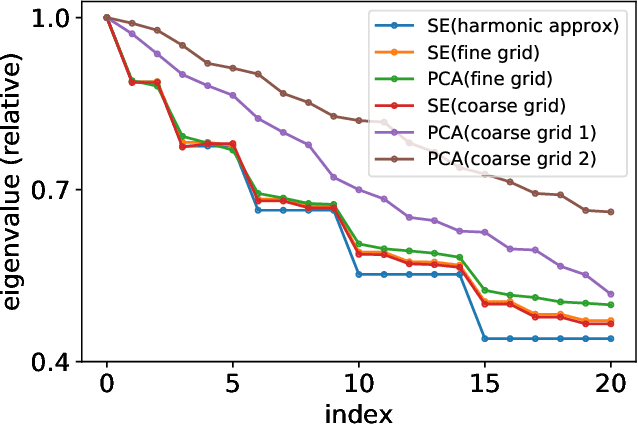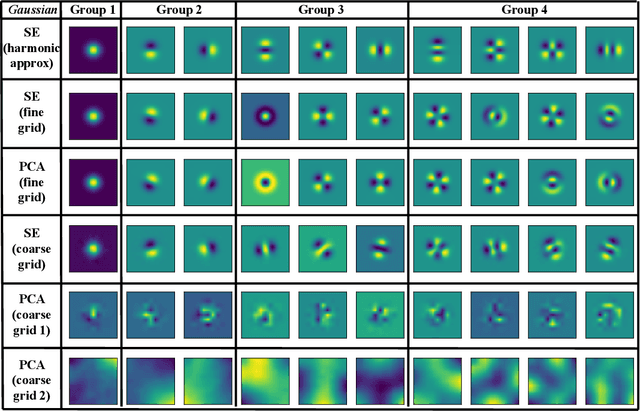Tianyi Yang
Raccoon: Prompt Extraction Benchmark of LLM-Integrated Applications
Jun 10, 2024Abstract:With the proliferation of LLM-integrated applications such as GPT-s, millions are deployed, offering valuable services through proprietary instruction prompts. These systems, however, are prone to prompt extraction attacks through meticulously designed queries. To help mitigate this problem, we introduce the Raccoon benchmark which comprehensively evaluates a model's susceptibility to prompt extraction attacks. Our novel evaluation method assesses models under both defenseless and defended scenarios, employing a dual approach to evaluate the effectiveness of existing defenses and the resilience of the models. The benchmark encompasses 14 categories of prompt extraction attacks, with additional compounded attacks that closely mimic the strategies of potential attackers, alongside a diverse collection of defense templates. This array is, to our knowledge, the most extensive compilation of prompt theft attacks and defense mechanisms to date. Our findings highlight universal susceptibility to prompt theft in the absence of defenses, with OpenAI models demonstrating notable resilience when protected. This paper aims to establish a more systematic benchmark for assessing LLM robustness against prompt extraction attacks, offering insights into their causes and potential countermeasures. Resources of Raccoon are publicly available at https://github.com/M0gician/RaccoonBench.
Large-scale Outdoor Cell-free mMIMO Channel Measurement in an Urban Scenario at 3.5 GHz
May 31, 2024Abstract:The design of cell-free massive MIMO (CF-mMIMO) systems requires accurate, measurement-based channel models. This paper provides the first results from the by far most extensive outdoor measurement campaign for CF-mMIMO channels in an urban environment. We measured impulse responses between over 20,000 potential access point (AP) locations and 80 user equipments (UEs) at 3.5 GHz with 350 MHz bandwidth (BW). Measurements use a "virtual array" approach at the AP and a hybrid switched/virtual approach at the UE. This paper describes the sounder design, measurement environment, data processing, and sample results, particularly the evolution of the power-delay profiles (PDPs) as a function of the AP locations, and its relation to the propagation environment.
ICE-SEARCH: A Language Model-Driven Feature Selection Approach
Mar 09, 2024



Abstract:This study unveils the In-Context Evolutionary Search (ICE-SEARCH) method, the first work that melds language models (LMs) with evolutionary algorithms for feature selection (FS) tasks and demonstrates its effectiveness in Medical Predictive Analytics (MPA) applications. ICE-SEARCH harnesses the crossover and mutation capabilities inherent in LMs within an evolutionary framework, significantly improving FS through the model's comprehensive world knowledge and its adaptability to a variety of roles. Our evaluation of this methodology spans three crucial MPA tasks: stroke, cardiovascular disease, and diabetes, where ICE-SEARCH outperforms traditional FS methods in pinpointing essential features for medical applications. ICE-SEARCH achieves State-of-the-Art (SOTA) performance in stroke prediction and diabetes prediction; the Decision-Randomized ICE-SEARCH ranks as SOTA in cardiovascular disease prediction. Our results not only demonstrate the efficacy of ICE-SEARCH in medical FS but also underscore the versatility, efficiency, and scalability of integrating LMs in FS tasks. The study emphasizes the critical role of incorporating domain-specific insights, illustrating ICE-SEARCH's robustness, generalizability, and swift convergence. This opens avenues for further research into comprehensive and intricate FS landscapes, marking a significant stride in the application of artificial intelligence in medical predictive analytics.
Practical Anomaly Detection over Multivariate Monitoring Metrics for Online Services
Aug 19, 2023



Abstract:As modern software systems continue to grow in terms of complexity and volume, anomaly detection on multivariate monitoring metrics, which profile systems' health status, becomes more and more critical and challenging. In particular, the dependency between different metrics and their historical patterns plays a critical role in pursuing prompt and accurate anomaly detection. Existing approaches fall short of industrial needs for being unable to capture such information efficiently. To fill this significant gap, in this paper, we propose CMAnomaly, an anomaly detection framework on multivariate monitoring metrics based on collaborative machine. The proposed collaborative machine is a mechanism to capture the pairwise interactions along with feature and temporal dimensions with linear time complexity. Cost-effective models can then be employed to leverage both the dependency between monitoring metrics and their historical patterns for anomaly detection. The proposed framework is extensively evaluated with both public data and industrial data collected from a large-scale online service system of Huawei Cloud. The experimental results demonstrate that compared with state-of-the-art baseline models, CMAnomaly achieves an average F1 score of 0.9494, outperforming baselines by 6.77% to 10.68%, and runs 10X to 20X faster. Furthermore, we also share our experience of deploying CMAnomaly in Huawei Cloud.
Heterogeneous Anomaly Detection for Software Systems via Semi-supervised Cross-modal Attention
Feb 14, 2023Abstract:Prompt and accurate detection of system anomalies is essential to ensure the reliability of software systems. Unlike manual efforts that exploit all available run-time information, existing approaches usually leverage only a single type of monitoring data (often logs or metrics) or fail to make effective use of the joint information among different types of data. Consequently, many false predictions occur. To better understand the manifestations of system anomalies, we conduct a systematical study on a large amount of heterogeneous data, i.e., logs and metrics. Our study demonstrates that logs and metrics can manifest system anomalies collaboratively and complementarily, and neither of them only is sufficient. Thus, integrating heterogeneous data can help recover the complete picture of a system's health status. In this context, we propose Hades, the first end-to-end semi-supervised approach to effectively identify system anomalies based on heterogeneous data. Our approach employs a hierarchical architecture to learn a global representation of the system status by fusing log semantics and metric patterns. It captures discriminative features and meaningful interactions from heterogeneous data via a cross-modal attention module, trained in a semi-supervised manner. We evaluate Hades extensively on large-scale simulated data and datasets from Huawei Cloud. The experimental results present the effectiveness of our model in detecting system anomalies. We also release the code and the annotated dataset for replication and future research.
Schrödinger PCA: You Only Need Variances for Eigenmodes
Jun 08, 2020



Abstract:Principal component analysis (PCA) has achieved great success in unsupervised learning by identifying covariance correlations among features. If the data collection fails to capture the covariance information, PCA will not be able to discover meaningful modes. In particular, PCA will fail the spatial Gaussian Process (GP) model in the undersampling regime, i.e. the averaged distance of neighboring anchor points (spatial features) is greater than the correlation length of GP. Counterintuitively, by drawing the connection between PCA and Schr\"odinger equation, we can not only attack the undersampling challenge but also compute in an efficient and decoupled way with the proposed algorithm called Schr\"odinger PCA. Our algorithm only requires variances of features and estimated correlation length as input, constructs the corresponding Schr\"odinger equation, and solves it to obtain the energy eigenstates, which coincide with principal components. We will also establish the connection of our algorithm to the model reduction techniques in the partial differential equation (PDE) community, where the steady-state Schr\"odinger operator is identified as a second-order approximation to the covariance function. Numerical experiments are implemented to testify the validity and efficiency of the proposed algorithm, showing its potential for unsupervised learning tasks on general graphs and manifolds.
 Add to Chrome
Add to Chrome Add to Firefox
Add to Firefox Add to Edge
Add to Edge